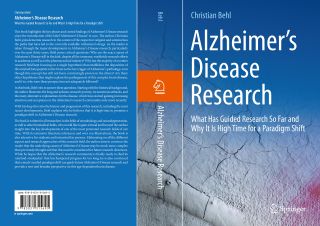Dementia
Alzheimer’s Disease Research: A Long and Arduous Endeavor
More than 100 years of efforts to understand, treat, or prevent Alzheimer’s.
Updated September 4, 2023 Reviewed by Kaja Perina
Key points
- Limited progress in Alzheimer’s treatment has been achieved, with no compelling therapy or cure in sight.
- Many reasonable Alzheimer hypotheses were introduced over decades, but one hypothesis has dominated.
- We urgently need to widen the angle of Alzheimer’s disease research; it is high time for a paradigm shift.
Alzheimer’s disease (AD) is a complex age-related disease of the brain; it is the most frequent cause of dementia and a threat to our aging societies. These are the few consensus conclusions that almost every AD researcher would agree upon. Many other issues, for instance, whether AD is one singular defined disease entity rather than an ill-defined broader syndrome, what the actual causes are, and what treatment or prevention avenues to pursue are all still subject to intensive research and debate since the introduction of the label “Alzheimer disease” in 1910.
The 1990s: problem solved, case closed?
About 30 years ago, I was actively participating in what could, in retrospect, be called the "golden era of AD research," which mainly concentrated on the biology of a small peptide deposited in the AD brain, the "amyloid beta peptide." At that time, many open ends came together nicely; exciting data from genetics, biochemistry, and cell biology were fitting like a jigsaw puzzle disclosing the picture of the "amyloid-cascade-hypothesis."
By the end of the 1990s, the cause of this progressive and fatal memory disorder appeared resolved, and all the blame was put on the amyloid beta peptide found in the brain of individuals with AD. Despite conceptual inconsistencies and continuous criticism on this linear cause-and-effect disease view, large parts of the AD community accepted it. Yet, it turned out to be much more complicated.
A widely accepted hypothesis got stuck and lost in (clinical) translation for years
Since age is one of the key risk factors of AD, in my own research, I started to work on the link of age-related hormone changes and the intracellular protein recycling process called "autophagy" in the context of neurodegeneration. Having returned to focused AD research more recently, I realized that most of the publications on AD were supportive of a causal role of amyloid beta.
However, I also uncovered an increasing number of critical discussions attacking the amyloid beta disease concept on the grounds of many failed clinical anti-amyloid trials since the 2000s. Seeing this discrepancy between the view "amyloid is the causative disease trigger" on one hand and the lacking of successful translation into the clinics on the other, made me curious.
While reading loads of literature, talking to key leaders in the AD field, and attending AD conferences, I got more and more dragged into the subject. For me, it was just like being on an expedition, like paddling along the Amazon River with its dense woods and the widely branched delta. I got lost in the many side arms, yet, I was always pulled back to the main arm—a metaphor which could stand for the ongoing reconfirmation of the mainstream in the literature, the "amyloid cascade." This hypothesis had been dominating AD research for three decades and is also the scientific basis of the more recently introduced anti-amyloid therapies aiming to immunologically remove the peptide out of the brain (e.g., anti-amyloid antibodies lecanemab, donanemab).1,2
There was definitively no shortage of alternative non-amyloid disease hypotheses over the years, and the fact that the "amyloid cascade" overruled all of them should be cause enough to search for the reasons of its tenacious persistence. “Whenever a theory appears to you as the only possible one, take this as a sign that you have neither understood the theory nor the problem which it was intended to solve.” These words from the British philosopher and epistemologist Karl Raimund Popper in 1972, as provocative as they may appear, certainly underline the need to always scrutinize the most obvious solution in science; and this may especially apply when it concerns the decoding of a scientific question with high impact on human health. One must ask, what happened to all the respectable alternative views on AD of the last century and why were they lost or almost forgotten? Were they simply just wrong?
The trajectory of Alzheimer’s disease research from the beginning up until today

The expedition report—so to speak—displaying the result of my "Amazon trip" is entitled “Alzheimer’s Disease Research—What Has Guided Research So Far and Why It Is High Time for a Paradigm Shift.”
This book aims to show the exciting beginnings of AD research, the evolution of disease hypotheses, the ups and downs, and today’s status quo of AD therapy and prevention.3 This research story discusses the obvious division and the conflict between different research camps, the orthodox insistence on certain views, and the partial neglect of key data challenging the mainstream. It also addresses the many still open questions regarding AD’s pathogenesis and its therapy avenues. Here are some key events and developments in the study of Alzheimer's Disease, as outlined in the book.
- The introduction of the label "Alzheimer’s disease" by Emil Kraepelin in 1910. Kraepelin was the mentor of Alois Alzheimer who first described the so-called hallmark features of AD. Interestingly, Oskar Fischer a fellow scientist from a "rival" laboratory in Prague observed similar pathologies as described by Alzheimer in 1906.
- The development of dementia research over more than 100 years in the context of the respective zeitgeist, the gathering of certain scientists in certain spots ("think tanks"), and the advent of new experimental measures.
- The paths that have led to approved AD drugs, starting with the "cholinergic" and "glutamatergic hypothesis" and the kick-off of amyloid research that followed the disclosure of the biochemical composition (amino acid sequence) of the amyloid beta peptide in 1984.
- The tantalizing race of cloning the gene of the amyloid peptide precursor (APP) between different labs in 1987, and the advent of the "amyloid-cascade-hypothesis," including early criticism, reappraisals, and modifications of it. Interestingly, this hypothesis paradigmatically follows the epistemologically defined course of a "hypothesis," and appears ripe for a paradigm shift.
- Various alternative disease concepts, ranging from the focus on the other hallmark protein tau and so-called tangles, to mitochondria dysfunction, oxidative stress, disturbed lipid metabolism, the role of infections, to the failure in endosomal-lysosomal function, and much more; some of these well-established alternatives exclude, some of them include a role of the amyloid beta peptide.
- Key driving forces of AD research directions, including the impact of high-ranking journals, associations, the pharmaceutical industry, and of protagonists as "influencers" of research.
- The recently introduced anti-amyloid therapies, molecular pathways that are currently raising a lot of attention, and lost tracks of the 1990s redux, which could lead to novel amyloid-independent therapies in the future.
- The possibilities of prevention and a more personalized therapy approach appreciating AD as a highly individual disease.
Screening the literature, it may appear that for many in the AD field, the ultimate proof to be right after following the mainstream hypothesis (the "amyloid cascade") for decades is of top priority; to me, this is completely dispensable. After a century-plus enduring research odyssey, the only priority should be to get a convincing and effective therapy on our hands, independently of which scientific fundament it is built upon; regardless of whether the solution is found on the "mainstream" or a "side branch."
The development of AD research delivered a tremendous amount of excellent scientific data and facts, especially in the last 30 years, but it also led to misunderstandings and over-interpretations. Until today, there is no cure in sight, and AD research still upholds fundamental issues as well as many mysteries, which may not be resolved without a significant opening of the AD research field, a change of mind, and a paradigm shift at best.
References
1. van Dyck CH, Swanson CJ, Aisen P, Bateman RJ, Chen C, Gee M, Kanekiyo M, Li D, Reyderman L, Cohen S, Froelich L, Katayama S, Sabbagh M, Vellas B, Watson D, Dhadda S, Irizarry M, Kramer LD, Iwatsubo T. Lecanemab in Early Alzheimer's Disease. N Engl J Med. 2023 Jan 5;388(1):9-21. doi: 10.1056/NEJMoa2212948. Epub 2022 Nov 29. PMID: 36449413.
2. Sims JR, Zimmer JA, Evans CD, Lu M, Ardayfio P, Sparks J, Wessels AM, Shcherbinin S, Wang H, Monkul Nery ES, Collins EC, Solomon P, Salloway S, Apostolova LG, Hansson O, Ritchie C, Brooks DA, Mintun M, Skovronsky DM; TRAILBLAZER-ALZ 2 Investigators. Donanemab in Early Symptomatic Alzheimer Disease: The TRAILBLAZER-ALZ 2 Randomized Clinical Trial. JAMA. 2023 Aug 8;330(6):512-527. doi: 10.1001/jama.2023.13239. PMID: 37459141; PMCID: PMC10352931.
3. Christian Behl. Alzheimer’s Disease Research—What Has Guided Research So Far and Why It Is High Time for a Paradigm Shift, Springer Cham 2023; ISBN: 978-3-031-31570-1. doi.org/10.1007/978-3-031-31570-1




